February 2018 Ideas and Innovation
Read the articles selected in February 2018
Repenser la révolution numérique
By Jean-Marc Vittori
Source: Les Echos, 16 February
Before changing our brain, the digital revolution has changed the material production. In respect to the industrial revolution, which has enhanced the manual labor, the advent of the digital has implemented the intellectual work, with consequences on the whole social scale.
NASA planetary protection officer suggests loosening limits on exploring Mars for life
By Paul Voosen
Source: Science, 22 February

The new NASA’s planetary protection agency has announced the intent to explore more aggressively Mars, what would make necessary a degree of tolerance for microbial contamination from the planet surface. Waiting for the modifications to the international treaties on this point, another philosophy rules in the agency.
Read more:
Une Europe à remonter le temps
By Fabien Goubet
Source: Le Temps, 22 February
The Venice Time Machine is a new European super-project nominated for a new FET Flagship, which allows to digitalizing millions of historical papers on the city with the aim to reconstruct on a continental scale our millenary patrimony.
Lab-grown cancer tumours could personalise treatment
By Alex Matthews-King
Source: The Independent, 23 February
Minitumours biopsied from cancer patients and grown in a lab can predict with a 100 percent accuracy if a drug has no effect on the body, avoiding useless chemotherapies and sparing precious time for rapidly evolving or advanced cancers.
Major mental illnesses unexpectedly share brain gene activity, raising hope for better diagnostics and therapies
By Roni Dengler
Source: Science, 8 February
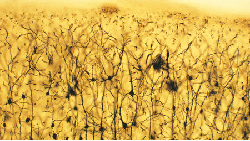
An important finding of the role of gene overexpression in mental illnesses, revealing unexpected distinctions and relations between the five major psychiatric disorders, will lead to new tests and therapies
Read more:
Dépistages génétiques, un progrès teinté d’angoisse
By Sylvie Logean
Source: Le Temps, 13 February
Although it is not easy to live knowing to be predisposed to serious illnesses, a genetic test gives the possibility to carry out a set of prevention and control measures for both the applicant and his family.
Cherche planète de rechange
By Vincent Bordenave
Source: Le Figaro, 6 February
The documentary by the physicist Christophe Galfard En quête d’une nouvelle Terre explores the reasons that make difficult the discovery of a habitable planet, starting from the certainty that one day we humans will have to leave to arrive at the belief that we will survive.
CRISPR hack transforms cells into data recorders
By Heidi Ledford
Source: Nature, 15 February
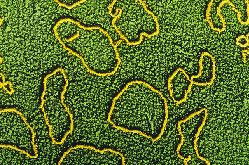
The CRISPR – Cas9 technique has made possible a new type of molecular tool. Harnessing the genome recording capacity it has been used as a recording device to track changes in gene expression and even erase information in the same genome.
Read more:
https://www.nature.com/articles/d41586-018-02068-0
A revolution in health care is coming
Source: The Economist, 1 February
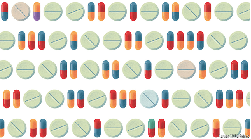
New technologies allow people to get better medical treatments. The access to the own medical records and the possibility to share them, the flow of information will make patients more likely to reduce errors or inefficiencies of care. The risks of data security and social disparities accompany the benefits of this revolution.
Employment of Colaizzi’s strategy in descriptive phenomenology: a reflection of a researcher
By Ghada Abu Shosha
Source: European Scientific Journal, November 2017
A study has analyzed the experience of chemotherapy, lived by a group of adolescents as a devastating change in the body and in the social relations, using the Colaizzi’s process, a method of descriptive phenomenology which is based on the reconstruction of patient interviews.
“Holy grail” solar system has water to sustain alien life
By Andrew Griffin
Source: The Independent, 6 February
New findings of the planets orbiting around the Trappist-1 star suggest the possibility of living conditions in this exosolar system, in the wait for the launch of a Nasa’s powerful telescope which will study its atmosphere’s chemistry. Meanwhile, the observation of this diverse worlds teaches us something also about our own.
Le Corbusier’s love of the ocean liner
Source: The Economist, 6 February

An exhibit in London shows how the modernist architecture in the 1930s was inspired by the structure and design of ocean liners. The fusion between aesthetics and function influenced the organization of the space in the buildings of American and European cities.
Read more:
https://www.economist.com/blogs/prospero/2018/02/architecture-and-open-sea
How to build an educational bridge
By Pierfrancesco Riccardi & Claudio Goletti
Source: Nature Nanotechnology, November 2017
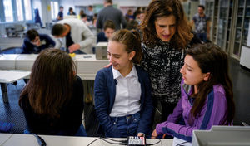
An extracurricular programme for secondary schools developed in strict collaboration between university researchers and teachers with a non-formal approach without assessments or exams has succeeded to introduce pupils to nanoscience while transmitting them the attitude to research
Read more:
https://www.nature.com/articles/nnano.2017.221
Artificial neurons compute faster than the human brain
By Sara Reardon
Source: Nature, 26 January
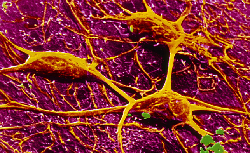
In the race to computing devices designed to mimic biological systems, researchers are trying to develop more efficient neuro-morphic hardwares. The creation of super neuron-like electrodes lets open the problem to understand the key properties of the biological synapses to recreate the process of the memory in a chip.
Read more:
https://www.nature.com/articles/d41586-018-01290-0
Love in the time of robots
By Alex Mar
Source: Wired, 17 January
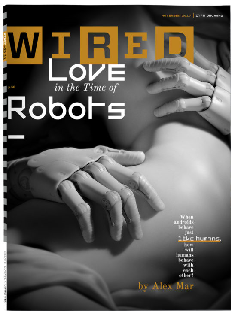
The humanlike androids built by Hiroshy Ishiguro, a pioneer in the field of research of human-robot interaction, aspire to capture the ineffability of the human nonverbal communication but end up with replicating the existential dilemma of the illusion to truly communicate with the other.
Read more:
https://www.wired.com/2017/10/hiroshi-ishiguro-when-robots-act-just-like-humans/
NASA nears
By Sarah Kaplan
Source: The Washington Post, 24 January
The Nasa is going to send a spacecraft near to the Sun with a series of trials and simulations.The probe will investigate fundamental science questions about the solar atmosphere, that are keenly relevant to life on Earth.
Info
- Pubblicato il : 05/03/2018 Modificato il : 04/04/2019

